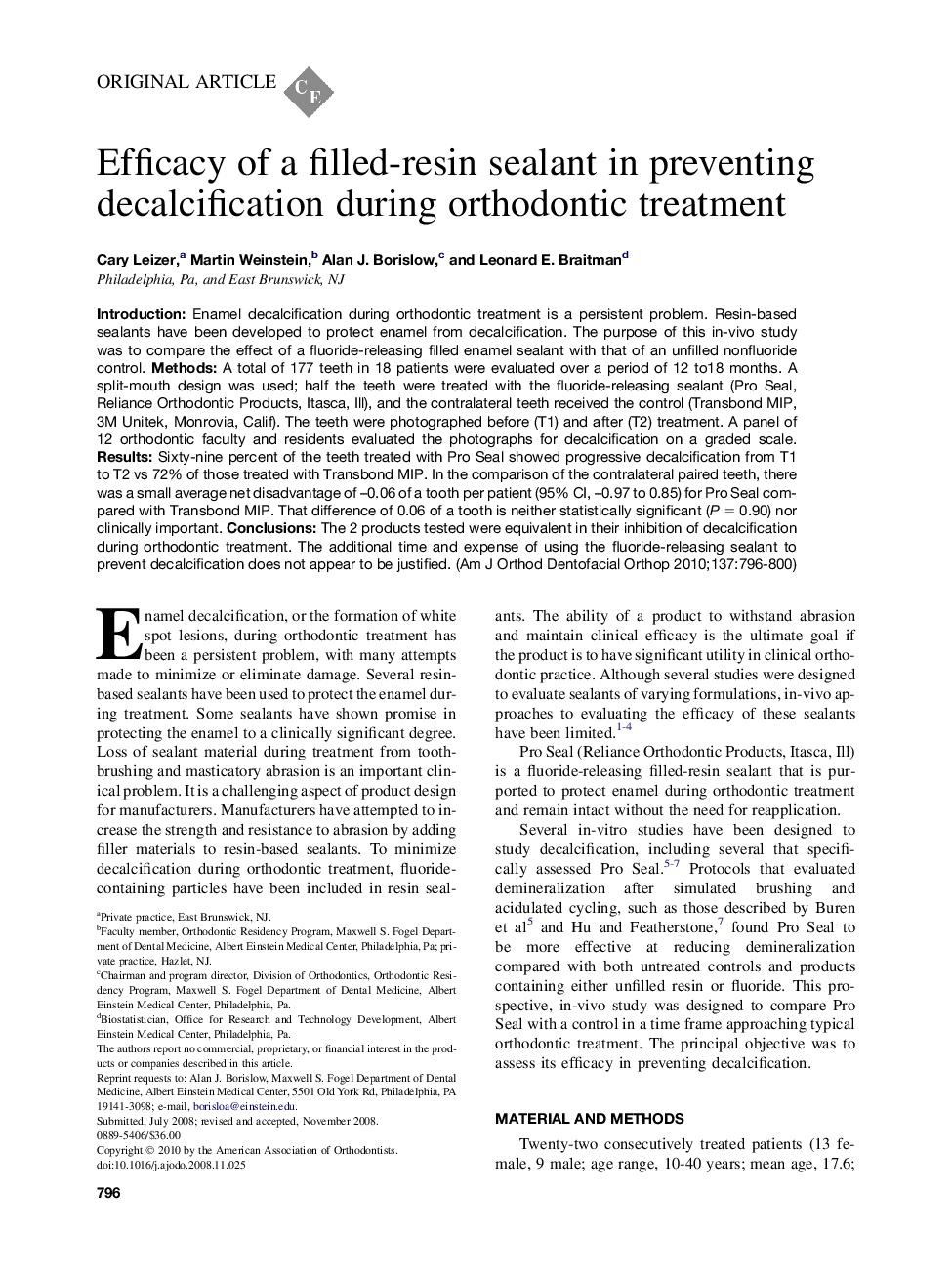| Article ID | Journal | Published Year | Pages | File Type |
|---|---|---|---|---|
| 3117614 | American Journal of Orthodontics and Dentofacial Orthopedics | 2010 | 5 Pages |
IntroductionEnamel decalcification during orthodontic treatment is a persistent problem. Resin-based sealants have been developed to protect enamel from decalcification. The purpose of this in-vivo study was to compare the effect of a fluoride-releasing filled enamel sealant with that of an unfilled nonfluoride control.MethodsA total of 177 teeth in 18 patients were evaluated over a period of 12 to18 months. A split-mouth design was used; half the teeth were treated with the fluoride-releasing sealant (Pro Seal, Reliance Orthodontic Products, Itasca, Ill), and the contralateral teeth received the control (Transbond MIP, 3M Unitek, Monrovia, Calif). The teeth were photographed before (T1) and after (T2) treatment. A panel of 12 orthodontic faculty and residents evaluated the photographs for decalcification on a graded scale.ResultsSixty-nine percent of the teeth treated with Pro Seal showed progressive decalcification from T1 to T2 vs 72% of those treated with Transbond MIP. In the comparison of the contralateral paired teeth, there was a small average net disadvantage of –0.06 of a tooth per patient (95% CI, –0.97 to 0.85) for Pro Seal compared with Transbond MIP. That difference of 0.06 of a tooth is neither statistically significant (P = 0.90) nor clinically important.ConclusionsThe 2 products tested were equivalent in their inhibition of decalcification during orthodontic treatment. The additional time and expense of using the fluoride-releasing sealant to prevent decalcification does not appear to be justified.
